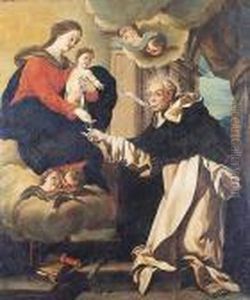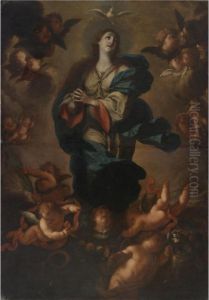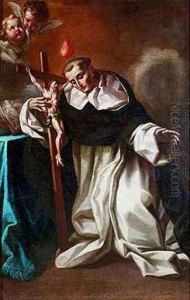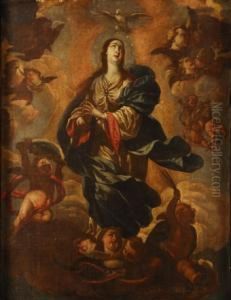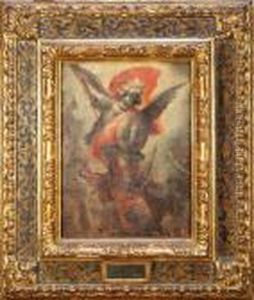Agiselo Antonio Don Palomino De Castro Y Velasco Paintings
Antonio Palomino, full name Agiselo Antonio Palomino de Castro y Velasco, was a Spanish painter, art theorist, and historian of the late Baroque period. Born on September 19, 1653, in Bujalance, near Cordoba, Palomino showed a keen interest in the arts from an early age. He initially studied under Juan de Valdés Leal in Cordoba, and later, he moved to Madrid, where he became a court painter and continued his artistic development under the guidance of the prominent painter Juan Carreño de Miranda.
Palomino is often remembered not only for his artistic works but also for his significant contributions to the documentation of Spanish Baroque art. His most notable written work is 'El Museo pictórico y escala óptica', which is divided into three parts. The first, 'The Pictorial Museum', serves as a painting manual and discusses various techniques and materials. The second, 'Optical Scale', delves into theories of perspective, optics, and color. The third, 'The Parnassus Spanish painter and sculptor laureate', is a biographical account of Spanish artists of the 16th and 17th centuries, which remains an invaluable resource for the study of Spanish art history. This work helped to consolidate his reputation as the 'Spanish Vasari'.
As a painter, Palomino was skilled in fresco and created significant works in various churches and palaces. His style was influenced by the prevailing Baroque aesthetic, characterized by dramatic expression, rich color, and dynamic composition. Among his notable works are the frescoes in the sacristy of Toledo Cathedral and the ceiling of the library in the Escorial.
Despite his achievements as an artist, it is Palomino's written works that have had a lasting impact on the history of art. His efforts to chronicle the lives and works of Spanish artists have provided critical insights into the era and the broader context of European art history. Palomino passed away on August 13, 1726, in Madrid. His legacy endures through both his paintings and his scholarly writings, which continue to be referenced by art historians and enthusiasts.
